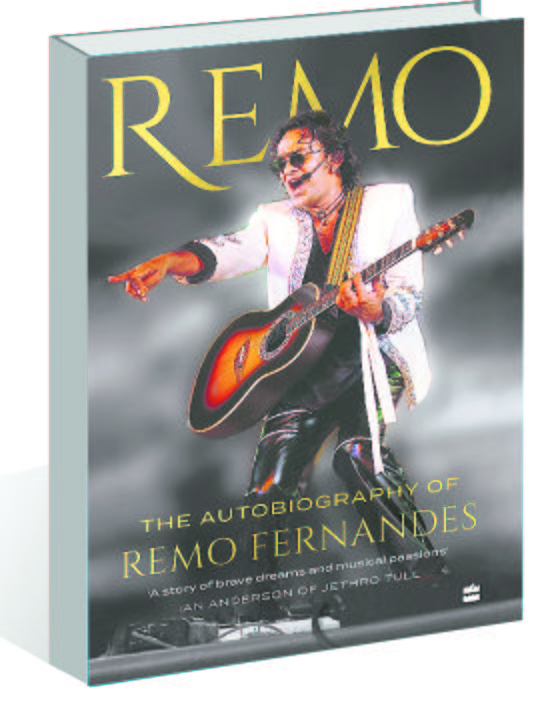Remo: The Autobiography of Remo Fernandes by Remo Fernandes. HarperCollins. Pages 485. Rs799
Book Title: Remo: The Autobiography of Remo Fernandes
Author: Remo Fernandes
Nonika Singh
Goa, for most, is an idyllic getaway. But in the voluminous autobiography of Remo Fernandes, a true-blue Goan, the history and culture of this former Portuguese colony comes alive in its multi-splendoured beauty. The singer, who gave pop/rock and English songs a truly Indian identity, takes us to the year 1961, when the Indian armed forces annexed Goa; he was barely eight.
A large part of the book describes his childhood years, of the times when Portuguese was the language of the place and music its de-facto code of expression. Yet, his grandfather forbade his children from pursuing it and found it a ‘waste of time’. Interestingly, even though Remo’s talent for music was spotted and duly encouraged by his father early on, its possibility as a career never dawned upon him or Remo, who found himself pursuing architecture at the Sir JJ College of Architecture.
We learn a lot about the singer — right from his family tree to his bands, including how the name of his band, The Microwave Papadums, came about. There is detailed information about the places he lived in and visited. Though he proclaims that this is no travel book, it does read like one, albeit from a man who followed the axiom: ‘have guitar will travel’. Clearly, a guitar means the world to a musician who got one at the tender age of nine and played it across the world to earn an extra buck till he discovered that music was his muse.
We get a peep into his musical odyssey, especially when, in worldly terms, he made it! From composing for and performing in Shyam Benegal’s ‘Trikal’ to the ever-popular ‘Humma-Humma’ for AR Rahman to the superhit song ‘Jalwa’ and ‘Hello, Rajiv Gandhi’, chapter after chapter takes us through many a glorious moments in his life. He talks at length about his first Hindi pop album, ‘Munni’, born out of a ‘fan moment’ of a school-going girl. Though several sexual escapades dot his story, what makes the book an interesting read are not the saucy details about his girlfriends, but his ability to paint a vivid picture of people, places and, of course, music. To his credit, while introducing us to musical terms, Remo doesn’t let jargon weigh heavy on his anecdotal writing style. Personal meets the social and the end result is not just documentation of his journey, but a record of the changing times and his role as a catalyst in redefining musical trends.
The book is a story of his dreams, passions, travails too, and, above all, as his song, ‘Keep the Faith’, goes: “I sit, I think, I write my story of longing... in a hundred and fifty thousand words.”














